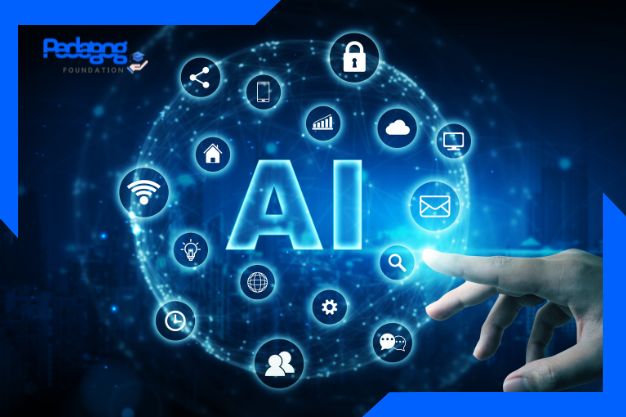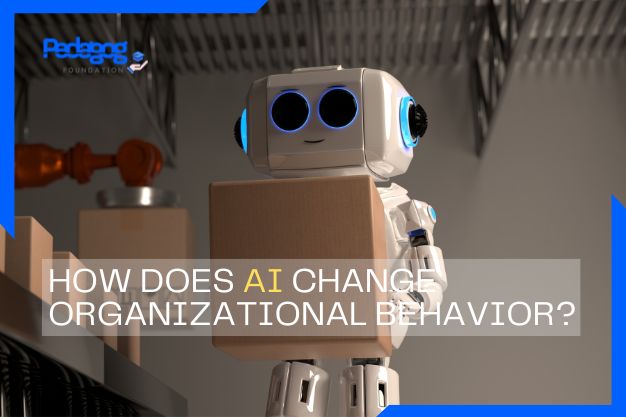AI is transforming organizational behavior in numerous ways, with profound effects on employees. These effects can be positive and challenging, depending on how AI is implemented, the industry, and the organizational culture. Here are key impacts with case references:

Automation and Job Roles
AI enables the automation of repetitive tasks, freeing employees for more complex and creative work. However, it can also lead to job displacement, requiring employees to upskill or reskill.
Case Reference: Amazon
Impact: Amazon uses AI and robotics extensively in its warehouses to streamline logistics. While this has improved efficiency, it has led to concerns about job automation and the well-being of employees working alongside machines.
Effect on Employees: Warehouse employees work under tight AI-driven monitoring systems that track performance, leading to stress and fatigue. Amazon has responded with training programs to help employees transition to more tech-driven roles like data analysis and machine learning.
Decision-Making and Problem-Solving
AI helps in data-driven decision-making, enabling employees to base their strategies on predictive analytics and insights.
Case Reference: PepsiCo
Impact: PepsiCo implemented AI in its marketing strategies to understand consumer behavior more effectively, launching campaigns that target specific customer segments.
Effect on Employees: Marketing teams now rely on AI insights for creative decision-making, shifting the role of employees from basic analysis to strategy development. Employees have to develop new skills in data interpretation and AI system management.
Employee Monitoring and Performance Evaluation
AI is used to track employee productivity, provide real-time feedback, and assess performance.
Case Reference: Microsoft Workplace Analytics
Impact: Microsoft uses Workplace Analytics to analyze employee collaboration patterns, email usage, and meeting behavior.
Effect on Employees: While it provides insights to improve team productivity, employees may feel that constant monitoring infringes on their privacy. This can lead to stress if employees perceive AI as a tool for surveillance rather than improvement.
Enhancing Employee Experience and Personalization
AI is also being used to improve employee engagement through personalized experiences, training programs, and HR services.
Case Reference: IBM Watson in HR
Impact: IBM uses Watson for talent management, assisting HR in recruitment, training, and employee engagement through AI-based recommendations and personalized learning plans.
Effect on Employees: Employees benefit from more tailored career development paths and faster HR service delivery. However, reliance on AI for critical HR decisions may lead to bias or depersonalization if not monitored.
Collaborative AI Systems
AI-powered tools augment human capabilities in teamwork and collaboration, enhancing organizational effectiveness.
Case Reference: Salesforce Einstein
Impact: Salesforce integrated Einstein, an AI-driven tool, to help sales teams by analyzing customer data and providing predictive recommendations.
Effect on Employees: Sales teams have seen improved efficiency in customer targeting and sales forecasting. This allows employees to focus more on relationship-building with clients. However, some employees feel the pressure to adapt quickly to AI tools, leading to a steep learning curve.
AI and Employee Well-being
AI tools can be used to support mental health and well-being initiatives by identifying patterns in employee stress or workload.
Case Reference: Unilever’s Well-being Program
Impact: Unilever implemented AI to track employees’ mental and physical health, providing early intervention suggestions and support mechanisms.
Effect on Employees: AI helps detect burnout and stress, offering employees resources before issues escalate. While it enhances employee well-being, some may feel hesitant about how their health data is being used.
Challenges and Concerns:
- Workplace Surveillance: AI can enhance monitoring but raises concerns about privacy and trust.
- Bias in AI: AI systems can perpetuate biases, especially in hiring, promotion, or performance evaluations, affecting fairness in organizational decisions.
- Job Displacement and Skills Gap: Employees need continuous learning and adaptation to keep pace with AI, as some roles may become obsolete, while new roles demand higher technical expertise.

Conclusion
AI’s effect on organizational behavior towards employees is profound, with significant benefits like efficiency, personalization, and enhanced decision-making, but it also poses challenges in terms of privacy, job displacement, and employee stress. Organizations that balance AI implementation with thoughtful human-centered strategies tend to see more positive outcomes for both the business and the workforce.
Submitted By
Dr. Rohit Kumar Pal
Senior Academician
Pedagog

